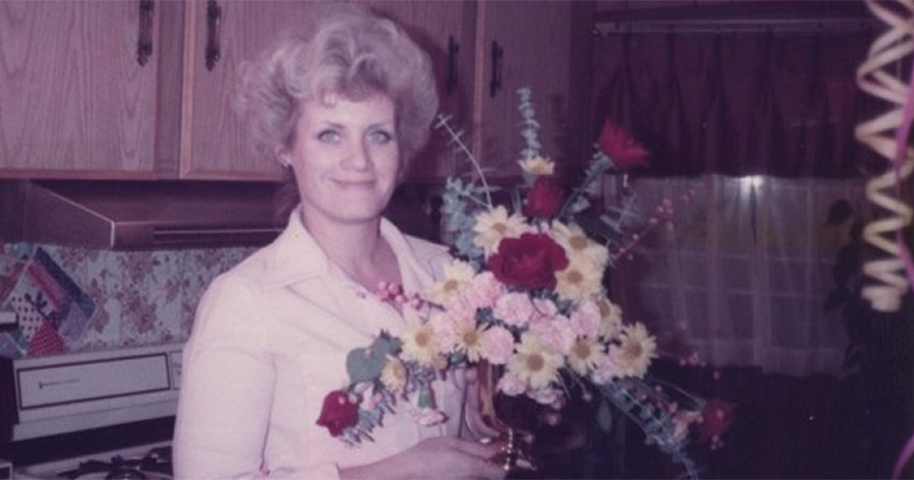Learning My Mother’s Grit
I grew up in a small town in Wyoming in a regular house on a regular street. When I think of this place, however, I am reminded that my years there were anything but what I imagine to be regular. My mother was the victim of domestic violence, and even at a young age I knew it was wrong. I knew it was wrong to see her with black eyes, split lips, and broken fingers. What stands out even more than these images when I recall my childhood, despite her oppressive experience, is her will, and her spirit.
My mother had strength. I could feel it in her presence and her conviction to have a better life. She never wavered in her message to me that I could be more—that I could build a life bigger than hers.
After my mom left her marriage, she began the difficult road of supporting four children on her own. She managed her way through being ultra-poor, multiple hard labor jobs, and the responsibilities of being a single parent. She eventually returned to school—twice. She trained how to be a first responder as part of emergency services and she trained to be a lab technician for a medical center. Eventually she found her way into the landscaping business and became the general manager of landscaping at a large resort. She had fortitude, and you could see her grit, her resolve, her heart, right up to the day she died. My mom is my hero and I want to share that will, that persistence, with those who have walked in the same shoes.
Where Women Stand
According to the National Coalition Against Domestic Violence (NCADV), in the United States, an average of 20 people are physically abused by intimate partners every minute (including men and women). This equates to more than 10 million abuse victims annually. One in three women have been physically abused by an intimate partner. On a typical day, domestic violence hotlines nationwide receive approximately 20,800 calls. In a 2018 study on sexual harassment and assault, 81% of women reported experiencing some form of sexual harassment in their lifetime.2 One in five women in the United States is raped during her lifetime.1 The statistics are staggering, and point to the simple fact that domestic abuse is, in fact, a regular occurrence for American women.
The statistics are staggering, and point to the simple fact that domestic abuse is, in fact, a regular occurrence for American women.
However, women are breaking the silence and are finally being heard. Tarana Burke was the first to launch the #MeToo Movement back in 2006 when she was hoping to empower women of color following an experience she had with a 13-year-old girl who had been sexually assaulted. Eleven years later, Alyssa Milano gave the movement a big push, as a part of an awareness to sexual assault campaign, when she encouraged others to tweet their #MeToo experience. The movement went viral. Since that time, the reports on sexual harassment and assault as well as other forms of violence against women have blown up in the media and brought the challenges that women face to light. There is much work to be done.
Supporting the Empowerment Movement
As a clinical psychologist with expertise in the treatment of traumatic events, I see women in my practice who have experienced all forms of trauma. Women come to me with reports of sexual harassment, rape, being beaten, and even tortured. I am moved by their stories and frustrated by how our society is too slow to respond. I not only want to stop the abuse, I want all of society to care that it’s happening and join me in stopping it. I want men and women alike to join me in seeing how treating women as second-class citizens diminishes not just women, but all people. In the spirit of the #MeToo movement, I call upon mental health professionals to help empower women by facilitating the process of being fully present in their lives.
When women are fully present in their own lives, they have the freedom to seek their personal values in a safe, unburdened way. My mother chose to leave her marriage because she was moving toward what was important to her—safety, integrity, freedom. I call on all who will listen to make change that’s needed for women to make these kinds of choices—from the therapy room, in safe and supportive way. Just as my mom taught me to, I will persist through my client’s stories of violence and oppression to help guide my female clients toward the clarity they need. I will share the grit and heart of my mother’s experience, rising to challenges and meeting them with spirit and heart in the service of empowering women.
1. NCADV, (2015). Domestic violence national statistics. Retrieved from www.ncadv.org
2. Stop Street Harassment, (2018). 2018 Study on Sexual Harassment and Assault. Retrieved from Home / Resources / 2018 Study on Sexual Harassment and Assault
Learn tools to empower & transform the lives of your female clients!

